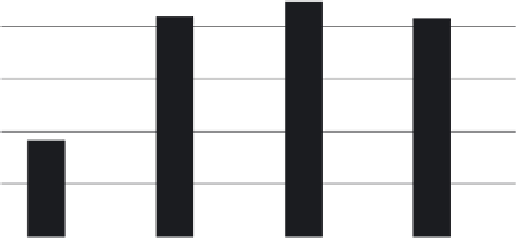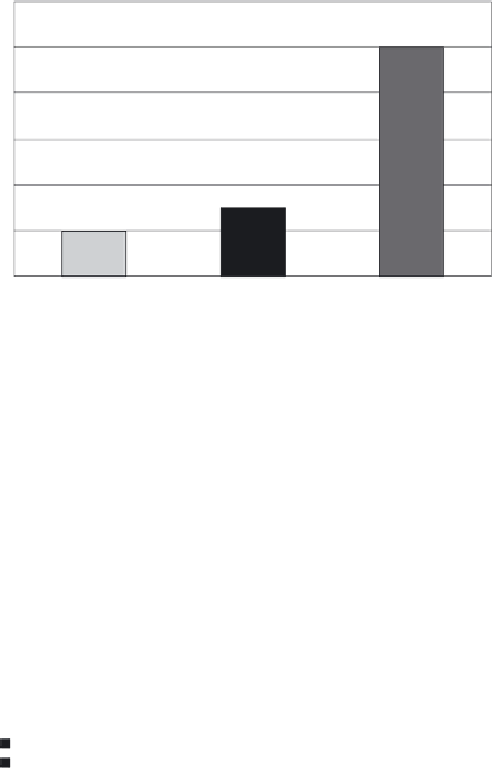Environmental Engineering Reference
In-Depth Information
3
2.5
2
1.5
1
0.5
0
Rainfed
Full irrigation
Supp. irrigation
FIGURE 22.6
Productivity of one cubic meter of green water (rainfed), of blue water
(full irrigation), and of blue water as supplemental irrigation for a basically rainfed wheat.
(Adapted from Oweis T. 1997.
Supplemental Irrigation: A Highly Efficient Water-Use
Practice.
ICARDA, Aleppo, Syria. 16 pp.)
observed that farmers tend to over-irrigate their wheat fields. When there is not enough
water to provide full irrigation to the whole farm, the farmer has two options: to irri-
gate part of the farm with full irrigation leaving the other part rainfed, or to apply
deficit irrigation to the whole farm. Assuming that under limited water resources only
50 percent of the full irrigation required by the farm would be available, the option
of deficit irrigation was compared with other options. The results show that a farmer
having a 4-hectare farm would on average produce 33 percent more grain from his
farm if he adopted deficit irrigation for the whole area, than if full irrigation was
applied to half of the area (Figure 22.7). The advantage of applying deficit irrigation
5
Yield (t/ha)
Water productivity (kg/m
3
)
4
3
2
1
0
Rainfed
(342 mm)
Farmer's
practice
Applying full
SI water
Applying 50% of
full SI
Water Management Option
FIGURE 22.7
Yield and water productivity for wheat under different water management
options for a four-hectare farm in northern Syria.





Search WWH ::

Custom Search